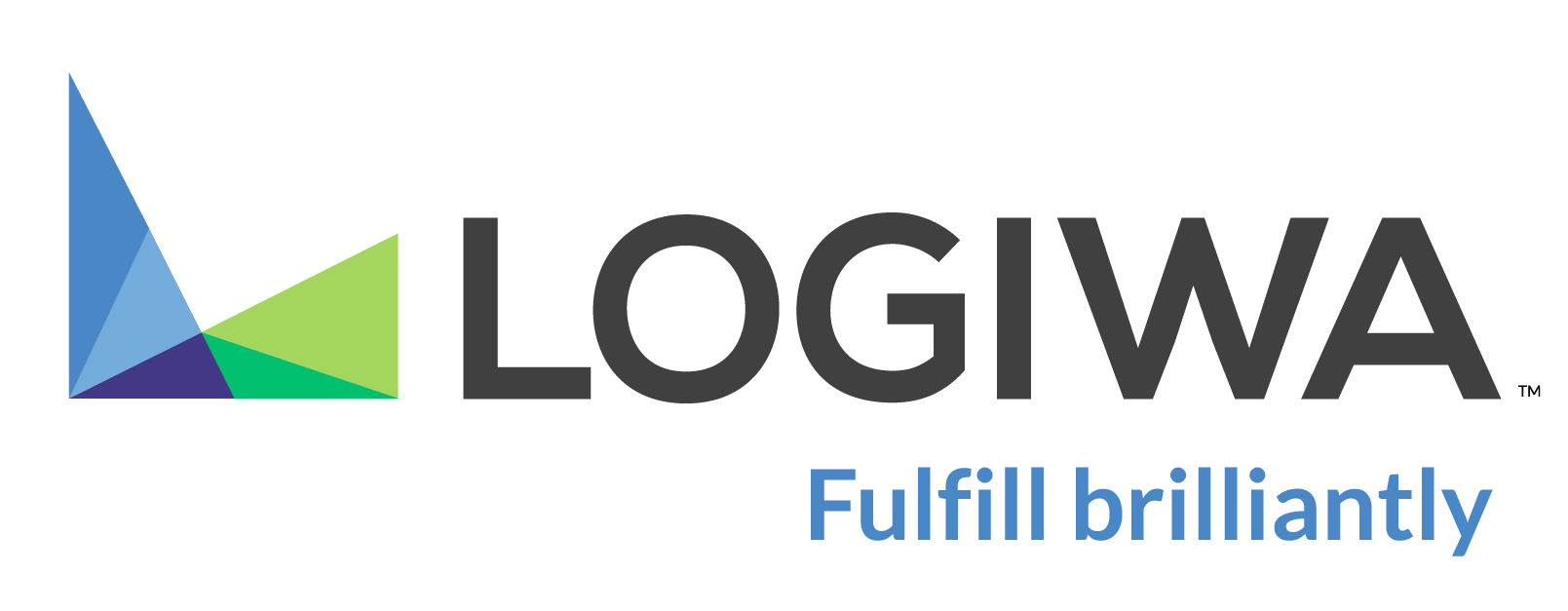The pressure to deliver faster, manage fluctuating demand, and keep operational costs in check has never been greater. The good news? A powerful new ally has emerged: Artificial Intelligence (AI). AI for labor optimization is a practical solution that’s transforming how fulfillment centers allocate, manage, and empower their workforce, leading to unprecedented efficiency and cost savings.
- The labor challenge: Navigating labor complexities in modern fulfillment
- The AI advantage: How artificial intelligence is reshaping workforce management
- The business impact: Measurable benefits of AI in labor optimization
- Implementing AI for labor optimization
- AI as a cornerstone of fulfillment excellence
- Ready to unleash the power of AI on your workforce?
- FAQs on AI for labor optimization
The Labor challenge: Navigating labor complexities in modern fulfillment
Modern fulfillment operations are a whirlwind of activity. Customer expectations for next-day, or even same-day, delivery are the norm. Order volumes can spike unpredictably due to promotions, seasonality, or unforeseen market shifts. Add to this the increasing demand for personalized services, and the complexity skyrockets.
Against this backdrop, fulfillment centers grapple with significant labor challenges:
- High labor costs: Labor can account for a substantial portion of fulfillment costs. Inefficient allocation, overtime, and the constant need to hire and train new staff can quickly erode profit margins. According to F. Curtis Barry & Company, labor typically represents 60-65% of a warehousing budget.
- Employee turnover: The demanding nature of fulfillment work, coupled with sometimes inefficient processes, can lead to high employee turnover. This not only incurs recruitment and training costs but also impacts productivity and morale. Supply Chain Dive highlighted that labor unrest remains a persistent issue, often exacerbated by outdated tools and strenuous working conditions.
- Outdated planning: Relying on gut feeling, historical spreadsheets, or simplistic “units picked per hour” metrics for labor planning often results in either overstaffing (leading to unnecessary costs) or understaffing (causing delays, missed SLAs, and employee burnout). These traditional methods lack the agility to respond to real-time operational needs.
The AI advantage: How artificial intelligence is reshaping workforce management
Enter AI for labor optimization. This isn’t about replacing human workers; it’s about empowering them and the entire operation with intelligent tools. AI leverages sophisticated algorithms, machine learning, and real-time data analysis to make workforce management smarter, more predictive, and incredibly adaptive.
Key AI capabilities driving this transformation include:
- Predictive analytics: AI algorithms can analyze vast datasets—historical order volumes, current sales trends, promotional calendars, weather forecasts, and even local events—to predict labor demand with remarkable accuracy.
- Machine learning: These systems aren’t static. They learn from new data and outcomes, continuously refining their forecasts and allocation strategies to become more effective over time. As noted by Gartner, “AI and machine learning are top supply chain investment opportunities.”
- Real-time data processing: AI can monitor operations as they happen, identify emerging bottlenecks or lulls, and suggest or even automate labor re-allocations instantly.
The benefits are compelling: significantly improved forecasting accuracy, dynamic task assignment based on current needs, and the ability to allocate employees based on their specific skills and performance, ensuring the right person is always on the right job.
Predictive analytics: Foreseeing labor needs with unprecedented accuracy
Imagine knowing with a high degree of confidence how many pickers, packers, and sorters you’ll need next Tuesday, or for the upcoming holiday rush. That’s the power of AI-driven predictive analytics. By sifting through patterns and correlations in your data that humans might miss, AI can forecast labor requirements for different roles and shifts, days, weeks, or even months in advance.
This foresight allows fulfillment managers to:
- Optimize schedules proactively, reducing the reliance on costly overtime or last-minute temporary staff.
- Avoid understaffing, which can lead to order backlogs, decreased throughput, and missed delivery promises.
- Improve budget planning by having a clearer picture of anticipated labor expenses.
Nucleus Research 2024 WorkForce Value Matrix highlighted how vendors have focused investments on AI and machine learning, specifically around forecasting capabilities.
Begin your predictive analytics journey by meticulously collecting and cleaning your historical labor data (hours, roles, shifts), order volumes (by day, by hour, by type), and processing times for various tasks. This foundational data is gold for a future AI system. Ensure data quality and consistency for the best results.
AI-driven labor allocation: The right people, right tasks, right now
Predicting demand is one piece of the puzzle; allocating your available labor effectively in real-time is another. This is where AI-driven labor allocation shines. Instead of static assignments, AI enables dynamic deployment.
Here’s how it works:
- Real-time adjustments: As new orders arrive or if a particular zone in the warehouse gets congested, the AI can instantly assess the situation and recommend reallocating staff. For example, if the packing stations are overwhelmed but picking is light, staff can be temporarily shifted.
- Skills-based matching: AI systems can maintain profiles of employee skills, certifications, and even performance levels for different tasks. When a task needs doing, the AI can assign the most suitable available employee, maximizing efficiency and quality.
- Minimizing idle time and bottlenecks: By constantly monitoring workflows and resource utilization, AI helps ensure that employees are actively engaged in value-adding tasks, reducing idle time and preventing bottlenecks from crippling throughput.
Logiwa IO’s labor standards are designed to provide these deep labor insights, helping to intelligently orchestrate your workforce.
Beyond Allocation: ai for elevating training and performance
The impact of AI extends beyond just assigning tasks. It can also play a crucial role in developing your workforce and fostering a fairer, more productive environment.
- Identifying skill gaps and training needs: By analyzing performance data, AI can identify areas where employees might benefit from additional training or cross-training. This not only improves individual performance but also creates a more versatile and skilled workforce.
- Fairer performance monitoring: Traditional metrics like “units picked per hour” often don’t tell the whole story. They don’t account for variations in task complexity, walking distances, or other factors outside an employee’s control. AI, especially when coupled with micro-activity tracking (breaking down tasks into smaller components like walking, scanning, placing), can provide a much more nuanced and fair assessment of employee effort and efficiency. This approach allows for targeted coaching and recognizes diverse contributions.
- Boosting morale and retention: When workloads are optimized, performance is fairly assessed, and employees see opportunities for growth, job satisfaction increases. AI can help create a more balanced and rewarding work environment, which in turn can significantly reduce costly employee turnover. Investing in systems that employees find intuitive and helpful, rather than frustrating, is key.
Explore implementing systems like Logiwa IO that are capable of tracking micro-activities (e.g., travel time between picks, time per scan, time at packing station). This granular data offers a clearer picture of individual contributions and helps identify true efficiency drivers, moving beyond simplistic output metrics.
Unlock a personalized tour of Logiwa IO
The business impact: Measurable benefits of AI in labor optimization
The adoption of AI for labor optimization isn’t just about operational improvements; it’s about tangible business results that hit the bottom line.
- Reduced labor costs: More efficient allocation, minimized overtime, optimized staffing levels, and reduced reliance on temporary staff all contribute to significant cost savings.
- Increased productivity and throughput: When the right people are doing the right tasks with minimal wasted effort, overall productivity and warehouse throughput soar. A Logiwa AI Job Optimization case study demonstrated remarkable results: over an 8-day period, labor hours were reduced by 39.8% (from 1,500 to 902), slashing labor costs from $37,500 to $22,550. Crucially, items picked per hour jumped from 56 to 93. This level of improvement can dramatically alter a fulfillment center’s profitability, potentially increasing gross profit margins for 3PLs by 13% to 21% depending on revenue per order.
- Improved employee satisfaction and retention: Employees who feel their skills are well-utilized, their workload is fair, and their contributions are recognized are more likely to be satisfied and stay with the company. AI helps create this environment, leading to lower turnover and the retention of valuable experienced staff.
- Enhanced ability to meet SLAs and customer expectations: Consistent, efficient operations translate directly into meeting or exceeding Service Level Agreements (SLAs) and keeping customers happy with fast, accurate deliveries.
Implementing AI for labor optimization
Embarking on an AI for labor optimization journey requires careful planning. Here are some key considerations:
- The data imperative: High-quality, comprehensive, and continuously updated data is the absolute foundation of any effective AI system. Invest in data collection, cleaning, and management processes.
- Seamless integration: Your chosen AI solution must integrate smoothly with your existing Fulfillment Management System (FMS), Enterprise Resource Planning (ERP), and other relevant business systems to ensure a unified data flow. Logiwa IO’s headless architecture and open APIs facilitate this critical integration.
- Leading the change: Implementing AI is as much about people as it is about technology. Develop a strong change management plan, communicate the benefits clearly to your team, and provide adequate training to ensure buy-in and successful adoption.
- Choosing your AI partner wisely: Not all AI solutions are created equal. Look for a provider with deep expertise in fulfillment operations and an AI-powered FMS specifically designed for the complexities of high-volume environments. Logiwa IO is an Al-powered Fulfillment Management System (FMS) built to scale operations in the digital era, offering a user-centric design, true cloud nature, and advanced AI integration.
AI as a cornerstone of fulfillment excellence
The application of AI in workforce management is a rapidly evolving field. What we see today is just the beginning. As AI technology becomes even more sophisticated, we can expect more advanced predictive capabilities, greater automation of complex decision-making, and even more personalized employee experiences.
Ultimately, AI is becoming a cornerstone of resilient, adaptive, and highly efficient fulfillment operations. Companies that embrace AI for labor optimization will be better positioned to navigate market uncertainties, scale effectively, and gain a significant competitive advantage. Logiwa is committed to this AI-driven future, continuously innovating to help businesses “Fulfill brilliantly.”
Ready to unleash the power of AI on your workforce?
Imagine a fulfillment center where your labor force operates like a finely tuned orchestra—every person in the right place at the right time, performing tasks they’re best suited for, with minimal downtime and maximum output. Picture your labor costs shrinking while your productivity and employee satisfaction soar. This isn’t a distant dream; it’s the reality that AI for labor optimization can deliver.
If you’re ready to move beyond guesswork and manual spreadsheets and embrace a smarter, more efficient way to manage your most critical resource, it’s time to explore AI.
Take the next step. Request a demo of Logiwa IO today and discover how our AI-powered Fulfillment Management System can revolutionize your labor allocation, slash costs, and propel your fulfillment operations into the future. Let us show you how LIO, our intelligent fulfillment assistant, can help you achieve deep labor insights and operational excellence.
FAQs on AI for labor optimization
What is AI for labor optimization in fulfillment?
How does AI improve workforce management in warehouses?
- Providing more accurate labor demand forecasting based on historical data, order trends, and other variables.
- Enabling dynamic, real-time allocation of staff to tasks and zones where they are most needed.
- Optimizing task assignments based on individual employee skills, performance, and availability.
- Identifying inefficiencies in workflows and suggesting improvements.
- Helping to create fairer performance metrics and personalized training recommendations.
What are the main benefits of AI-driven labor allocation?
Is AI for labor optimization difficult or expensive to implement?
How can Logiwa IO specifically help with AI-driven labor allocation?
- Analyzing data to predict labor needs and optimize staffing.
- Suggesting intelligent task assignments and optimizing workflows in real-time.
- Enabling micro-activity tracking for fairer and more detailed performance analysis.
- Offering a user-centric design that is easy for employees to learn and use, boosting adoption and efficiency. Its cloud-native, headless architecture also ensures seamless integration and scalability.





